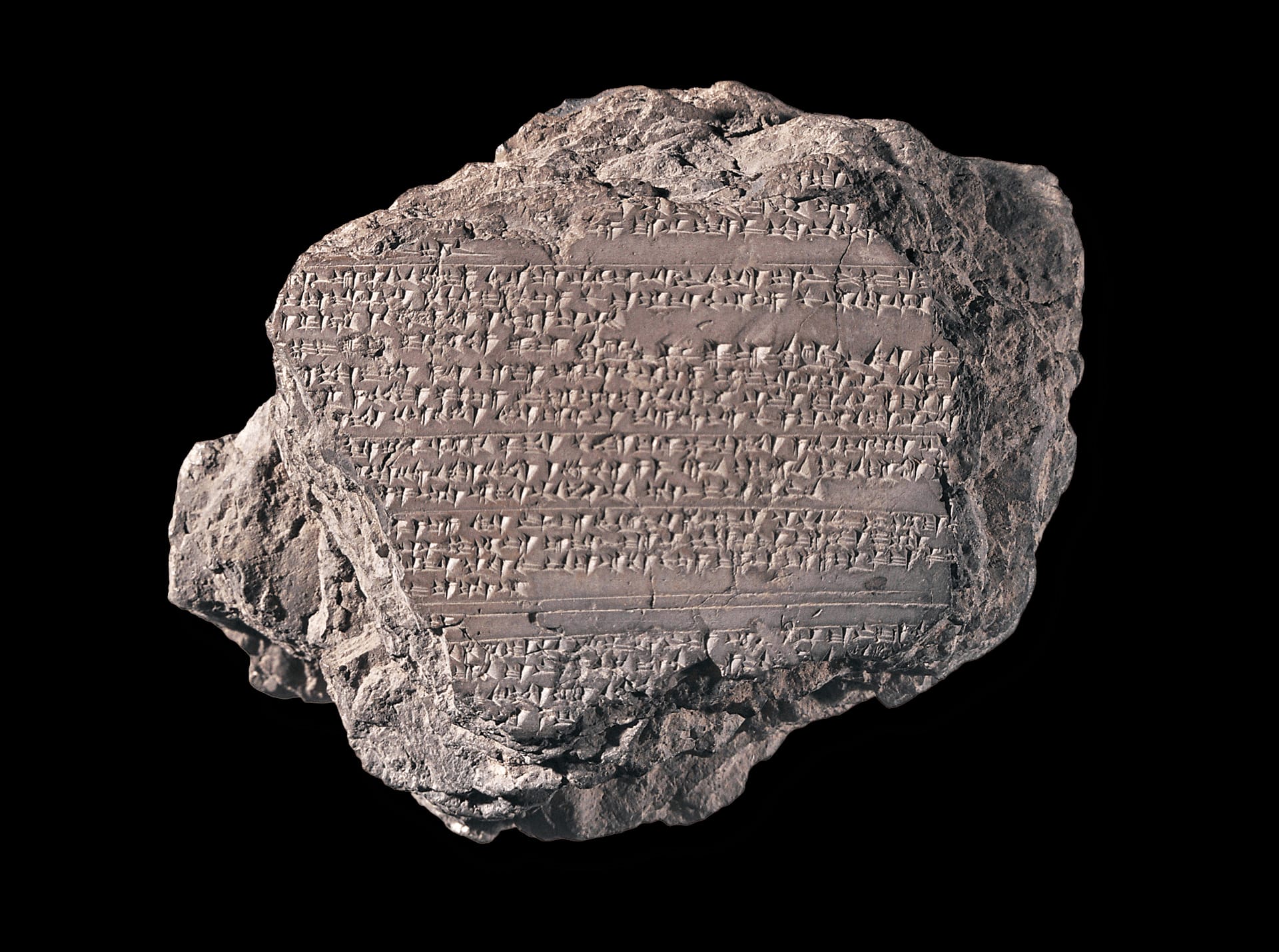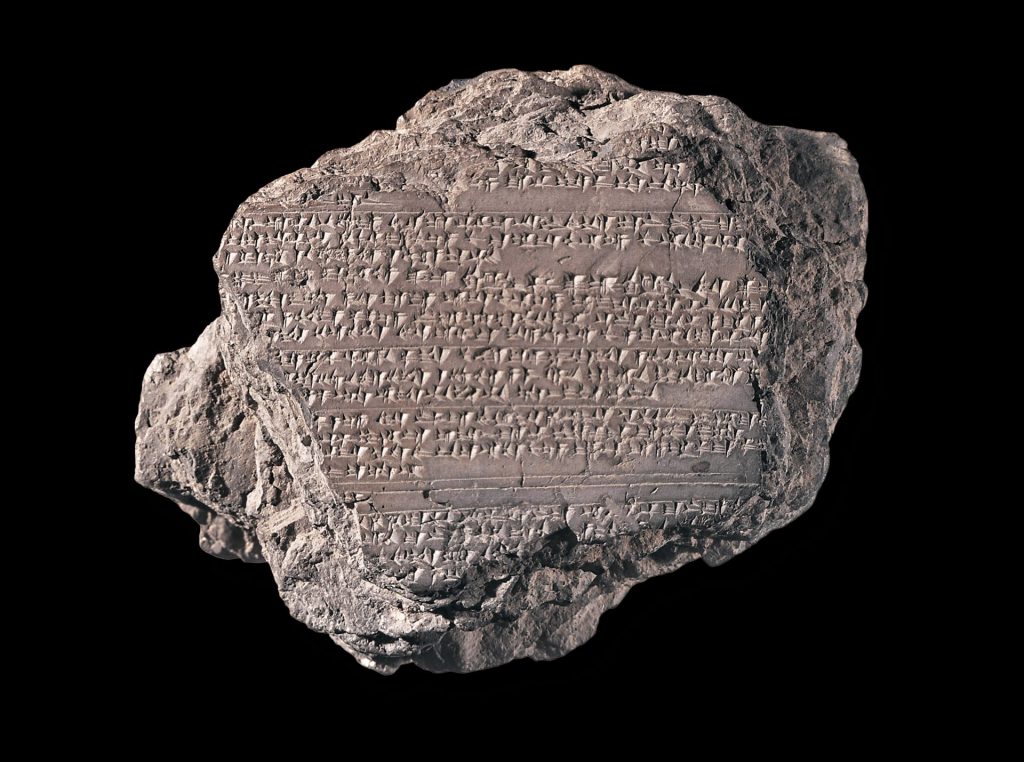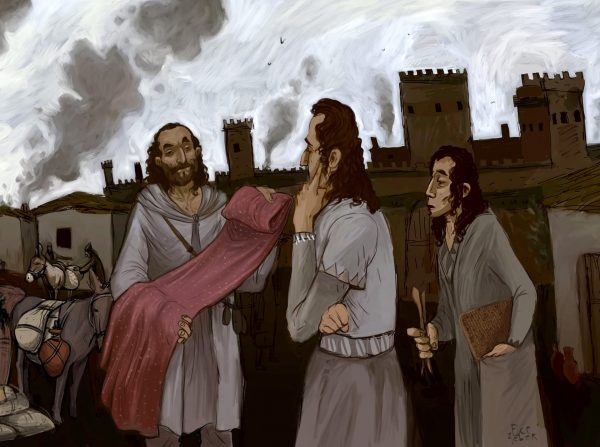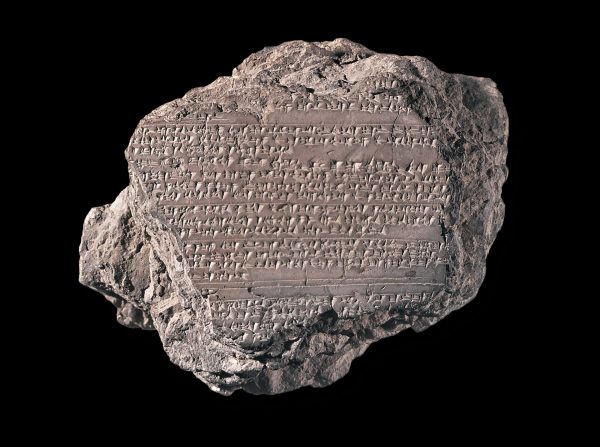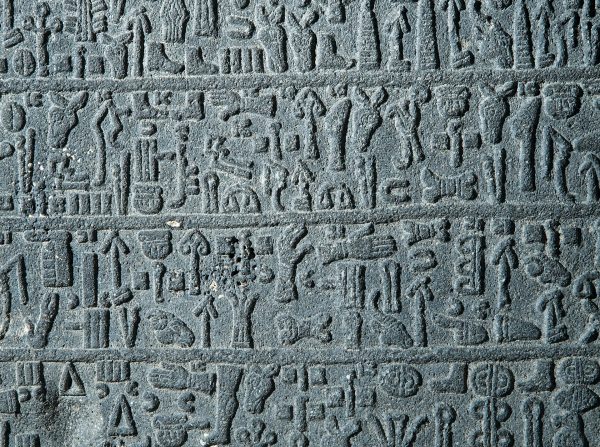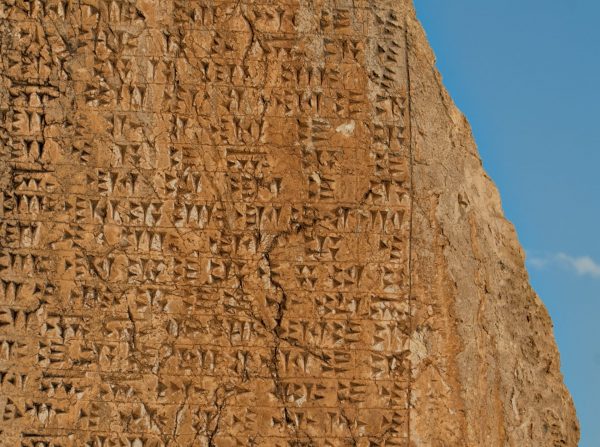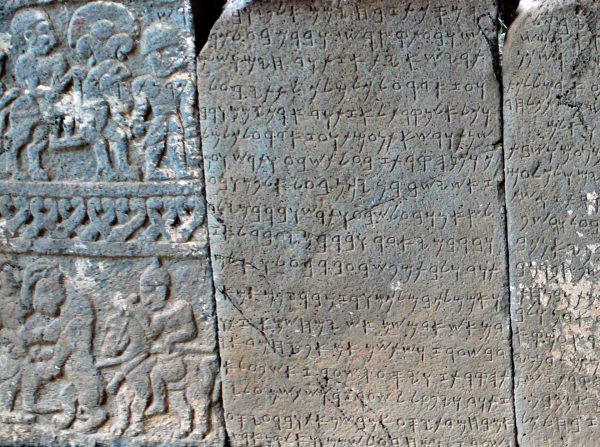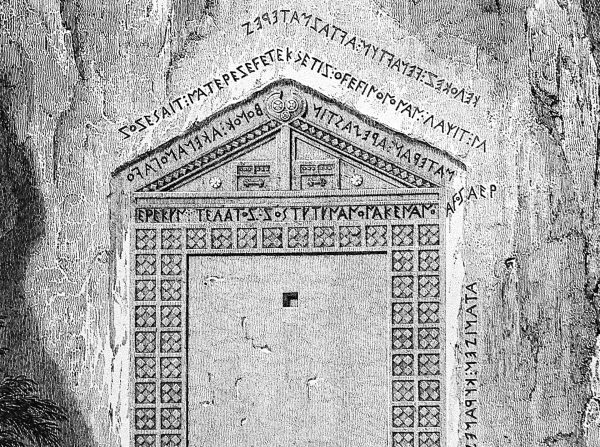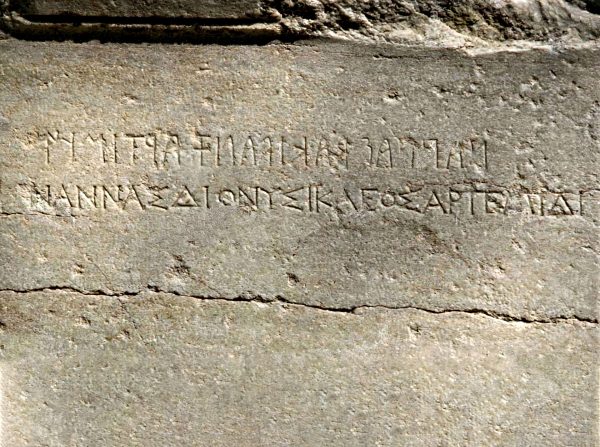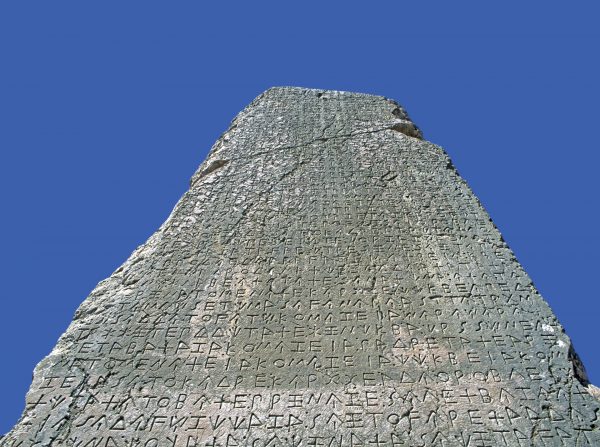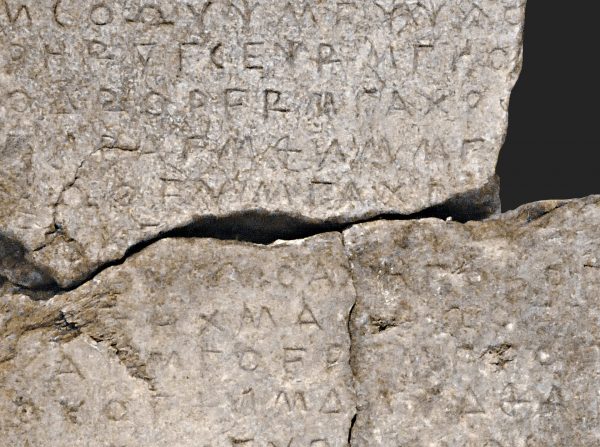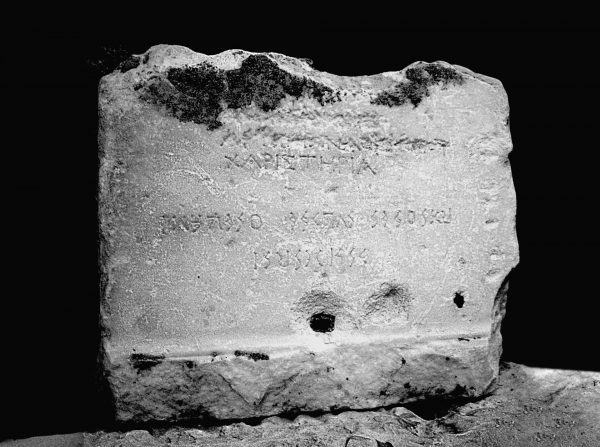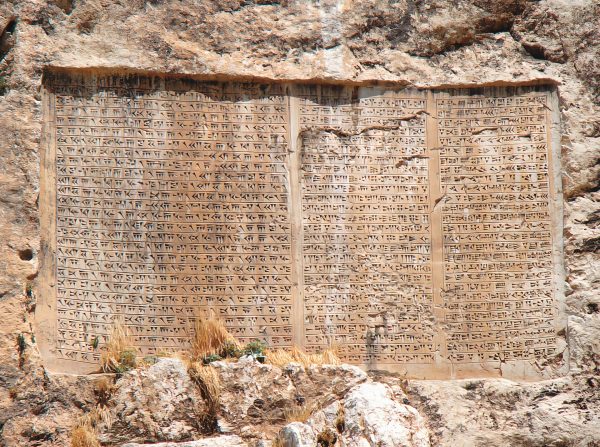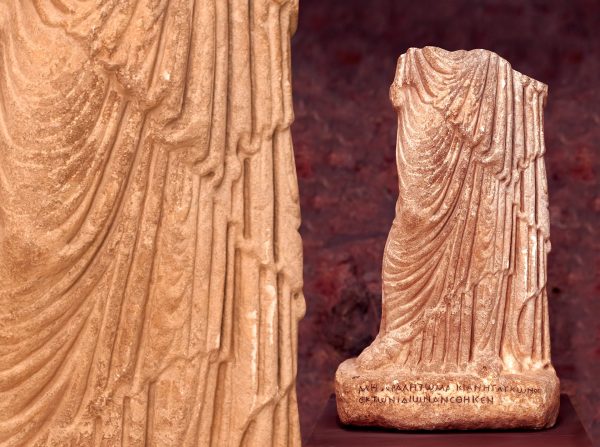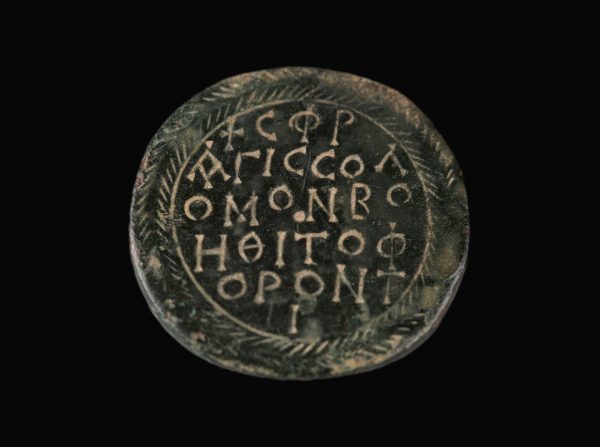Written by King Anitta of Kussara and Neša of Anatolia in 18th century BC, the text is written in the oldest known Hittite cuneiform discovered in Hattusa. In the inscription, Anitta describes how the city of Neša was conquered during the reign of his father Pithana, the King of Kussara.
As the official language of the Hittite State founded in Central Anatolia in 18th century BC, Hittite is the first and oldest member of the Indo-European languages. It was derived from the Hebrew root ḥēt. repeated 48 times in the Bible. Dated from 17th to 12th centuries BC, there are approximately 30.000 inscriptions, mostly cult inventories, written in Hittite cuneiform. The oldest document to have been written in Hittite cuneiform and language is the King “Anitta Inscription”.
Using a combination of cuneiform and hieroglyphics, the Hittites used cuneiform for the inscription tablets and hieroglyphics on seals, rock monuments, and stone blocks. Having developed as a derivative of Assyrian-Babylonian or Akkadian cuneiform, the Hittite cuneiform uses 375 basic cuneiform signs. The cuneiform that the Hittites adapted from Babylonian into their own Indo-European language includes 18 consonants such as “b, d, g, h, k, l, m, n, p, r, s, t, w, y” and 4 vowels like “a, e, i, u.”
Seal of Puduhepa
Place of Discovery: Hattuşa (Çorum)
Language: Anatolian hieroglyph and cuneiform
Date: 13th century BC
Material: Clay
Çorum Archaeological Museum Collection
Dated to the the Hittite Empire Era, the interior of the seal carries the hieroglyph of The Great King Hattusili III beneath the winged sun disk along with the name and title of Queen Puduhepa across from it. A single line of cuneiform surrounds the seal. Holding equal rights as the King, Queen Puduhepa of Hurri origin was actively involved in the administration of legal and religious affairs.
Anitta Inscription
Place of Discovery: Hattuşa (Çorum)
Language: Hittite
Date: 18th century BC
Material: Clay
İstanbul Archaeological Museums Collection
…“I have written these words on a tablet on the city gate. No one shall hurt this tablet in the future. (Whoever should do such a thing) shall become the enemy of Nesa.” …
“…and when they were devastated by hunger, their throne goddess Halmasuit handed me the (city) and I conquered it in the night. I sowed vile grass in its ground. Whoever becomes king after my rule and resettles Hattusa again, let him be enemy to the Stormgod.”
Written by King Anitta of Kussara and Neša of Anatolia in 18th century BC, the text is written in the oldest known Hittite cuneiform discovered in Hattusa. In the inscription, Anitta describes how the city of Neša was conquered during the reign of his father Pithana, the King of Kussara.

